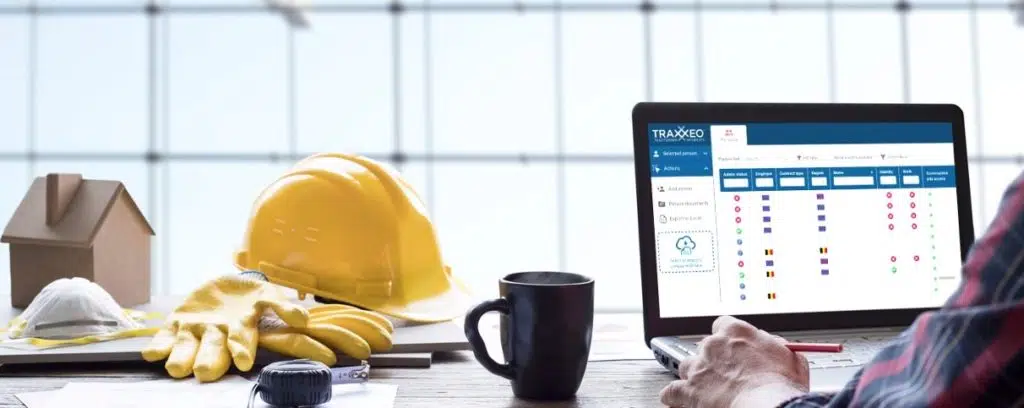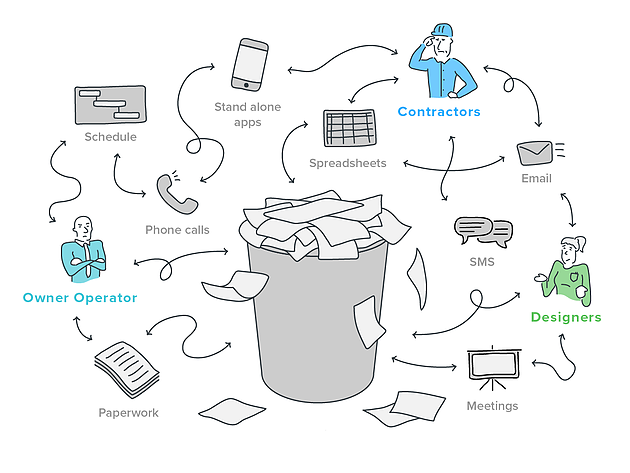Efficient Construction Document Management Solutions for every single Task
Efficient Construction Document Management Solutions for every single Task
Blog Article
Enhancing Process Effectiveness: Architect's Specialist Methods for Construction Document Administration
In the world of building layout and construction, the precise monitoring of records stands as a cornerstone for task success. These methods not only guarantee smooth job development but likewise hold the vital to opening boosted productivity and precision in the detailed realm of construction file management.
Key Document Organization Techniques
When managing construction documents, among the vital methods that engineers utilize is establishing a systematic and reliable organization system. This system typically entails classifying files based on their type, such as drawings, requirements, agreements, and permits. By creating clear and distinctive categories, engineers can swiftly locate details information when required, saving time and reducing mistakes in the building process.
Within each category, designers better organize files by using or producing subfolders numbering systems to signify alterations or versions (construction document management). This ordered framework ensures that the most present and pertinent details is conveniently obtainable while maintaining a record of changes made throughout the job timeline
In addition, engineers often utilize electronic file administration systems that use functions like keyword search features, variation control, and accessibility constraints to boost company and partnership amongst job stakeholders. These devices streamline the document retrieval procedure, advertise real-time updates, and promote smooth interaction, inevitably adding to the general success of the building project.
Collaborative Platform Combination
To enhance file management efficiency in building and construction tasks, engineers effortlessly integrate collaborative systems to improve communication and streamline control amongst project stakeholders. By leveraging joint systems such as project monitoring software program, cloud-based storage systems, and communication devices, engineers can develop a centralized center for all project-related papers and communication networks. These systems allow staff member to accessibility, evaluation, and collaborate on records in real-time, reducing hold-ups and the danger of mistakes connected with traditional record management approaches.
Collective system integration also cultivates transparency and responsibility within the job team, as all stakeholders have exposure right into the most up to date project updates and alterations. By systematizing communication and file sharing, engineers can guarantee that all staff member are working from the most updated info, decreasing the chances of problems or misconceptions arising due to obsolete documents.
Moreover, joint systems make it possible for smooth collaboration between architects, professionals, clients, and other job stakeholders, advertising a much more natural and reliable task operations. By damaging down interaction barriers and assisting in info exchange, designers can drive efficiency and technology in construction tasks, inevitably bring about effective job results.
Version Control Best Practices
Implementing effective version control techniques is crucial for preserving file accuracy and uniformity in building and construction jobs. By establishing a clear system for managing revisions, task groups can make sure that everyone is functioning from one of the most updated documentation, minimizing the threat of mistakes and discrepancies throughout the building and construction phase.
Among the essential best practices for variation control is to designate distinct identifiers to each paper version. This can be attained by utilizing a numbering system or date stamp that plainly indicates the order of alterations. By clearly labeling each version, staff member can quickly track the development of the document and identify the most current version.

Automation Devices for Effectiveness

Record control software program, like Procore or you could look here PlanGrid, centralizes project documentation, making it easily available to all stakeholders. These platforms enable real-time partnership, version control, and automated backups, protecting against data loss. Additionally, Building Details Modeling (BIM) software automates the generation of construction illustrations and ensures that changes are synchronized throughout all relevant records.
Incorporating automation devices with cloud storage space services better boosts access and protection. By automating the paper administration process, project groups can concentrate their effort and time on value-adding activities, eventually improving performance and task results.
Secure Data Management Solutions
Successfully guarding and handling task information is critical in the building and construction industry to ensure discretion and integrity throughout the job lifecycle. Building companies more helpful hints can utilize encrypted cloud storage solutions to firmly share and keep task documents with licensed workers.
Furthermore, utilizing digital civil liberties monitoring (DRM) tools adds an additional layer of security by avoiding the unapproved circulation or duplication of project files. Routine data back-ups are vital to mitigate the risk of data loss because of unanticipated conditions like equipment failings or cyber-attacks. Collaborative platforms with built-in safety and security functions allow seamless communication and data sharing among task team members while preserving information honesty.
Conclusion
In conclusion, executing vital document organization strategies, incorporating joint systems, exercising variation control finest methods, utilizing automation tools, and adopting safe and secure information monitoring options are crucial strategies for boosting operations performance in building and construction record administration. These skilled methods can improve processes, boost interaction, guarantee accuracy, and keep information safety and security throughout the building and construction task lifecycle.
In the realm of architectural layout and building, the precise management of records stands as a foundation for project success. These approaches not just guarantee smooth task development yet likewise hold the vital to opening boosted productivity and accuracy in the elaborate world of building home document monitoring.
To enhance record administration efficiency in building and construction projects, engineers effortlessly integrate collective systems to improve interaction and enhance control among task stakeholders. These platforms enable group members to accessibility, review, and team up on files in real-time, lowering delays and the danger of mistakes connected with typical file monitoring methods.
Using automation devices in construction paper monitoring considerably boosts efficiency and enhances procedures for project teams. construction document management.
Report this page